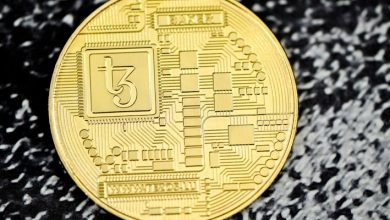The Future of Crypto Mining: Innovations and Sustainability

- The Evolution of Crypto Mining Technology
- Exploring Green Energy Solutions for Crypto Mining
- The Impact of Regulations on Crypto Mining Practices
- Innovative Approaches to Increase Mining Efficiency
- Addressing Environmental Concerns in Crypto Mining
- The Role of Artificial Intelligence in the Future of Mining
The Evolution of Crypto Mining Technology
Cryptocurrency mining technology has evolved significantly over the years, adapting to the changing landscape of the industry. In the early days, miners could use simple CPUs to mine for coins like Bitcoin. However, as the difficulty of mining increased, more advanced hardware was required to compete. This led to the development of GPU mining, which provided a significant increase in hashing power.
As the demand for mining continued to grow, specialized hardware known as ASICs (Application-Specific Integrated Circuits) was introduced. ASICs are designed specifically for mining cryptocurrencies and offer unmatched efficiency and performance compared to traditional CPUs and GPUs. This advancement in technology revolutionized the mining industry, allowing for faster and more cost-effective mining operations.
Another key development in crypto mining technology is the rise of cloud mining services. Cloud mining allows individuals to rent mining hardware remotely, eliminating the need for expensive equipment and high electricity costs. This has made mining more accessible to a wider audience, driving further adoption of cryptocurrencies.
In recent years, there has been a growing focus on the sustainability of crypto mining operations. With concerns over the environmental impact of mining, many companies are exploring greener alternatives to traditional mining methods. This has led to innovations such as renewable energy-powered mining farms and the utilization of waste heat generated by mining operations.
Overall, the evolution of crypto mining technology has been marked by constant innovation and adaptation to meet the demands of the industry. From CPUs to ASICs to cloud mining, miners have continued to push the boundaries of what is possible in the world of cryptocurrency mining. As the industry continues to grow and evolve, we can expect to see even more advancements in technology that will shape the future of crypto mining.
Exploring Green Energy Solutions for Crypto Mining
Exploring sustainable energy solutions for cryptocurrency mining is crucial for the future of the industry. As the demand for digital currencies continues to rise, so does the energy consumption associated with mining operations. In response to this growing concern, many companies are now focusing on implementing green energy sources to power their mining activities.
One of the most promising green energy solutions for crypto mining is solar power. By harnessing the energy of the sun, miners can significantly reduce their carbon footprint and operating costs. Solar panels can be installed on mining farms to generate electricity, providing a renewable and environmentally friendly source of power.
Another innovative approach to sustainable crypto mining is the use of hydroelectric power. By utilizing the energy of flowing water, miners can power their operations with minimal impact on the environment. Hydroelectric power is not only renewable but also highly efficient, making it a viable option for eco-conscious mining companies.
Wind power is also being explored as a green energy solution for crypto mining. By leveraging the power of the wind, miners can generate electricity through wind turbines, reducing their reliance on traditional energy sources. Wind power is abundant in many regions, making it a cost-effective and sustainable option for powering mining operations.
Overall, the shift towards green energy solutions for crypto mining is a positive step towards enhancing sustainability in the industry. By reducing the environmental impact of mining activities, companies can not only lower their operating costs but also contribute to a more sustainable future for cryptocurrency mining.
The Impact of Regulations on Crypto Mining Practices
Regulations play a significant role in shaping the practices of crypto mining operations. These regulations are put in place by governments to ensure that mining activities are conducted in a responsible and sustainable manner. As the crypto mining industry continues to grow, regulators are becoming more concerned about the environmental impact of mining operations. Regulations are being implemented to limit the carbon footprint of mining activities and to promote energy-efficient practices.
One of the main challenges faced by crypto miners is complying with these regulations while remaining profitable. Miners are required to invest in new technologies and infrastructure to reduce their energy consumption and minimize their environmental impact. Some miners are turning to renewable energy sources such as solar and wind power to power their operations, while others are exploring innovative cooling solutions to reduce their energy consumption.
Despite the challenges posed by regulations, many miners see them as an opportunity to innovate and improve their practices. By embracing sustainable mining practices, miners can not only comply with regulations but also attract environmentally conscious investors and customers. The future of crypto mining lies in finding a balance between profitability and sustainability, and regulations are playing a crucial role in shaping this future.
Innovative Approaches to Increase Mining Efficiency
Innovative approaches are being developed to enhance mining efficiency in the crypto industry. These advancements aim to streamline operations, reduce energy consumption, and increase profitability for miners. One such approach is the use of artificial intelligence (AI) algorithms to optimize mining processes and improve resource allocation. By leveraging AI technology, miners can make data-driven decisions in real-time, leading to higher productivity and lower operational costs.
Another innovative strategy is the implementation of renewable energy sources to power mining operations. By harnessing solar, wind, or hydroelectric power, miners can reduce their carbon footprint and operate in a more sustainable manner. This not only benefits the environment but also helps miners save on electricity costs in the long run. Additionally, some companies are exploring the concept of underwater mining facilities to take advantage of the natural cooling properties of water, which can significantly lower energy requirements for cooling systems.
Furthermore, advancements in hardware technology, such as the development of more efficient mining rigs and specialized chips, are also contributing to increased mining efficiency. These new tools enable miners to process transactions faster and more effectively, ultimately leading to higher returns on investment. Moreover, the integration of blockchain technology into mining operations is revolutionizing the way data is stored and verified, enhancing security and transparency in the process.
Overall, these innovative approaches are paving the way for a more sustainable and efficient future for crypto mining. By embracing technology, renewable energy, and cutting-edge hardware, miners can stay ahead of the curve and maximize their profits while minimizing their impact on the environment. As the industry continues to evolve, it is crucial for miners to adapt to these changes and embrace innovation to remain competitive in the ever-changing landscape of crypto mining.
Addressing Environmental Concerns in Crypto Mining
With the rise of crypto mining activities, concerns about its environmental impact have also grown. Many people are worried about the amount of electricity consumed by mining operations and the resulting carbon footprint. Addressing these environmental concerns is crucial for the sustainability and acceptance of crypto mining in the long run.
One way to mitigate the environmental impact of crypto mining is by using renewable energy sources such as solar, wind, or hydroelectric power. By harnessing the power of nature, mining operations can significantly reduce their reliance on fossil fuels and decrease their carbon emissions. This shift towards renewable energy not only benefits the environment but also helps mining companies save on energy costs in the long term.
Another strategy to address environmental concerns in crypto mining is through the use of energy-efficient hardware and cooling systems. By investing in more efficient equipment, miners can optimize their energy consumption and reduce their overall environmental footprint. Additionally, implementing advanced cooling technologies can help minimize the energy required to keep mining rigs running smoothly.
Furthermore, improving the overall sustainability of crypto mining operations involves proper waste management practices. Miners should prioritize recycling electronic waste and disposing of hazardous materials responsibly. By reducing the amount of waste generated by mining activities, companies can minimize their negative impact on the environment and contribute to a cleaner, greener future for the industry.
In conclusion, addressing environmental concerns in crypto mining is essential for the industry’s long-term viability and acceptance. By embracing renewable energy sources, investing in energy-efficient hardware, and practicing responsible waste management, mining operations can reduce their environmental footprint and become more sustainable. It is crucial for miners to prioritize sustainability and make conscious efforts to minimize their impact on the environment as the industry continues to evolve.
The Role of Artificial Intelligence in the Future of Mining
Artificial intelligence is set to play a crucial role in the future of mining, revolutionizing the way operations are conducted and improving efficiency across the board. By leveraging AI technologies, mining companies can optimize their processes, reduce operational costs, and enhance safety measures.
One key application of AI in mining is predictive maintenance, where algorithms analyze data to anticipate equipment failures before they occur. This proactive approach not only minimizes downtime but also extends the lifespan of machinery, ultimately leading to significant cost savings for mining operations.
Another area where AI is making a significant impact is in autonomous vehicles and drones. These technologies can be used to survey mining sites, collect data, and even operate heavy machinery without human intervention. By doing so, mining companies can increase productivity, improve accuracy, and ensure the safety of their workforce.
Overall, the integration of artificial intelligence into the mining industry represents a major step forward in terms of innovation and sustainability. As technology continues to advance, we can expect to see even more sophisticated AI applications being developed to further optimize mining processes and drive the industry towards a more efficient and environmentally friendly future.





